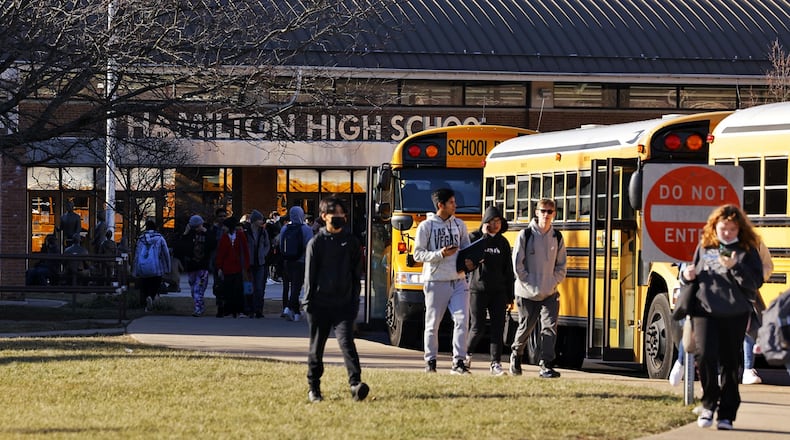Adding to that is the lingering health concerns of the COVID-19 pandemic, which since spring of 2020 has to date impacted parts or all of four school calendar years as 2023 begins.
But on the spring horizon for the new year looms a potential epidemic of financial woes, some of which have already impacted the financial health of a few local school systems including Ross and Talawanda Schools.
Adding to the fiscal uncertainty is Ohio’s next biennium budget and state legislators’ deadline of June 30 to create a new operating budget that will greatly determine the financial stability for all 613 public school districts.
School treasurers have long stressed the impossibility of calculating, state-mandated, five-year budget projections that encompass multiple and unknown two-year budgets, which include for most Ohio districts the majority of their annual school funding levels.
Moreover, fiscal uncertainties will also arise as ESSER (Elementary and Secondary School Emergency Relief) money begins to fade as a funding source.
Officials in both Ross and Talawanda school systems said in 2022, the receding of federal monies — combined with inadequate state funding — helped push them to seek school tax levies from their residents, who rejected those proposed tax hikes.
Both districts are headed to return to the ballot with new proposed tax levies in 2023 and they will likely be joined by some other Butler County school systems before year’s end.
There are currently no plans for new tax ballot issues in the 10,000-student Fairfield Schools but Superintendent Billy Smith said the financial pressures of dwindling federal COVID-19 funds are adding to the burdens already brought on by increasing inflationary costs in all operations of every Ohio public school system.
Meeting student needs, especially in the wake of the learning gaps created by the pandemic’s most disruptive years of 2020 and 2021 requires adequate funding, said Smith.
“The most important challenge for school districts is to evolve as the needs of the students we serve continues to change. In the last several years, Fairfield Schools have done a great job utilizing the ESSER funds to provide additional supports and services for our students.”
“And if you look at our gap closing data, it is evident that those additional funds made a tremendous impact on our students. However, that revenue isn’t permanent. As a result, one of our biggest challenges is to plan for how we can continue to support our students at a high level without that additional funding,” said Smith, who is the most veteran of all Butler County superintendents.
Other large enrollment districts, such as Lakota, Hamilton and Middletown, are facing similar obstacles as each continues their sweeping instructional reforms to try to close the pandemic gaps in student proficiencies caused by the once-in-a-century pandemic.
Beyond school funding, 2023 may also see a rise in lightning rod political issues revolving around the return of local board of education elections in the fall.
Area school boards will see the three-seat majority of their five member boards on ballots and given the historic contentiousness around a myriad of hot-button issues in recent years, the elections will undoubtedly reflect many residents’ passionate stances for and against candidates.
And chronic staffing shortages among teachers, substitute instructors, non-teaching school staffers and bus drivers will continue into the new year as area districts continue to scramble to find ways to fill jobs and retain employees.
About the Author

